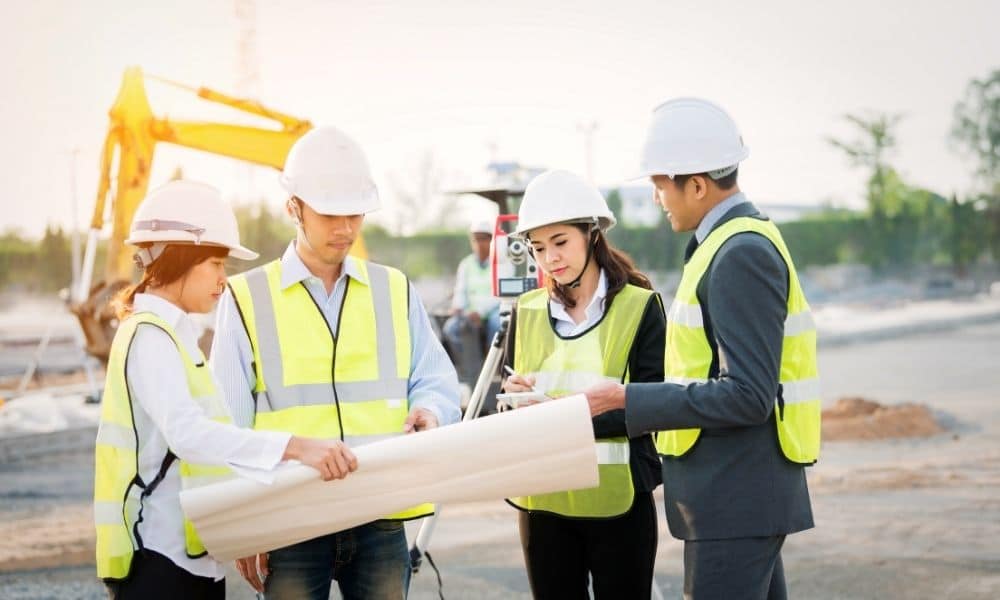Businesses and other organisations must have management tools to protect the wellbeing, health and safety of employees and visitors. Model WHS laws have been enforced in all states and territories in Australia except for Western Australia and Victoria. Therefore, knowing the definition of a risk assessment, why it is important, and which aspects of risk assessment apply to your business or organisation is extremely important.
Risk Assessment
A risk assessment is a structured and systematic way to identify hazards and risks in a workplace. It also includes the implementation of processes to manage and eliminate the effect of these dangers. Risk assessments will only be successful if organisations conduct regular work health and safety training to acquaint their staff with the latest risk management protocols.
There are a number of terms that are associated with the definition of risk assessment. For instance, if an unexpected situation happens in the workplace and results in some injury or loss, then that is defined as an accident. Anything that is likely to lead to some form of harm is usually regarded as a hazard.
Categories of Risk Assessments
Each workplace is unique. This means that certain risk assessments conducted in one workplace may not identify the potential dangers in another. Any successful risk assessment must be compatible with the operations and activities taking place in that specific workplace. Generally, the scope and type of industry will determine whether hazardous materials, equipment, and processes will exist.
Some of the major risk assessment types include:
-
- Fire risk assessment: All workplaces must have fire safety measures to protect the workplace against potential fire outbreaks.
- Manual handling assessment: A manual handling assessment must take place to identify if there’s a risk of ill-health or injury as a result of doing manual work in the workplace.
- Display screen equipment assessment: This type of assessment will happen in any workplace that houses electronic display devices such as phones, laptops, and computers.
Who Should Conduct a Risk Assessment?
Typically, it is the prerogative of the business management or ownership to conduct risk assessments of their workplace. However, if the owners or managers of the business lack the prerequisite skill set, they can opt to appoint another person to conduct a risk assessment, known as a health and safety executive. Either way, the owners of the business must plan, organise, control, monitor, and evaluate the effectiveness of risk mitigation processes. This means that the ultimate risk assessment responsibility lies with the employer, even if they decide to delegate the assessment.
Once the risk assessment process is complete, a report detailing potential hazards and dangers will be prepared. The employer will then proceed to implement a series of steps to protect the employees from these potential hazards. Moreover, the employer must inform employees about the existence of these dangers.
It has been suggested that the process of informing employees will be more effective if they are involved in the assessment process. When employees are involved in the assessment process, they will easily understand the associated hazards and how to avoid them. Nevertheless, the employer may have to organise additional training to ensure that all employees understand the existing workplace risks.
What Is the Purpose of a Risk Assessment?
Functional risk management requires constant and accurate risk assessments. As an employer, you have a legal obligation to document any risks in your workplace, if you have five or more employees. This ensures that the wellbeing and general health and safety of your workers are guaranteed. Some of the main benefits of a risk assessment are:
-
- To find out the existence of any health and safety dangers within your workplace
- To examine the compatibility and effectiveness of response and control mechanisms, including the implemented procedures
- To determine whether you need to assign extra resources to your risk management program
If you don’t conduct a risk assessment, you will spend a lot of money on compensating employees and fighting legal challenges. Besides, your business will have to fight several civil actions and other legal cases. In some cases, the resulting negative publicity may destroy your brand and drive your business into administration.
When Should a Risk Assessment be Conducted?
Risk assessments should occur as early as possible. Failure to conduct a risk assessment early enough will reduce the business’s ability to respond to hazards in the workplace. The business may also be liable for legal prosecution if it does not take measures to safeguard the health and safety of employees.
After the risk assessment is complete, the management must engage in periodic reviews. This is because the processes and equipment within the workplace may have changed since the last risk assessment was performed. This means that the risk mitigation and safety procedures in place may not adequately protect all employees.
In addition to the periodic reviews, there should be an immediate risk assessment and root cause analysis when an accident occurs. This type of risk assessment should focus on the response measures in place and whether they are commensurate with the potential hazards in the workplace.
Risk Assessment Process
Every organisation usually chooses its preferred way of doing risk assessments, but the process has some common steps. Here is a checklist of how a risk assessment should proceed.
1. Create a List of Likely Dangers
The first step of any risk assessment process is identifying the dangers lurking in the workplace. Generally, the hazards and risks include anything that can injure, cause discomfort, or even kill your employees. It’s easy to pick out most hazards in a workplace, although some dangers aren’t obvious.
You will need to take a closer look at the materials, processes, assignments, and activities taking place in your workplace. At the same time, you can examine previous accidents to discover potential hazards that may not be so obvious. Another hazard identification activity is examining the manufacturer’s manual instructions to see if your chemicals or processes have any harm to human beings. Once you have identified all the hazards in your workplace, you can categorise them so you can create more effective response mechanisms.
2. Determine Who Is at Risk
After you have documented the potential hazards, you need to know who will be affected if they do occur. Once you have identified who will be affected, you also need to know how they’ll be affected. Consequently, you should create a list of the affected people and include their names, as well as the hazard that may affect each person. It has been noted that certain categories of people, such as expectant mothers and children, may be at a higher risk.
3. Determine the Risk Level of Each Hazard
Next step in a risk assessment is performing an individual risk analysis to determine the seriousness of each risk that has the potential to cause harm. When you determine the level of risk, you’ll be able to create the right control measures. A common mistake is spending too much money on hazards that aren’t very severe. Having an effective risk analysis process and being able to control the risk to eliminate the effects of accidents occurring, is an integral part to ensuring the health and safety of your employees.
There are several factors that you must consider when determining the level of risk of each hazard. For instance, you need to determine the probability of an accident occurring, the effectiveness of your control protocols, and the costs of implementing control measures. You may also need to predict the duration of the hazard and if first aid measures may be required.
4. Document the Findings and Implement New Policies
As an employer, you have the obligation to store your findings in writing or in an electronic format. Furthermore, documenting the findings provides an efficient way to monitor and evaluate your risk mitigation processes. Risk assessment records include things such as the type of hazards discovered, the corresponding control measures, and the risk response management. The assessment date as well as the assessment tasks may also be included in the final report.
5. A Review of the Risk Assessment
The health and safety executive should perform regular reviews of the risk assessments, with each review providing invaluable insights into the effectiveness of the risk control measures previously put in place. A review may also be necessary when new processes, equipment, chemicals, and structures are introduced in the workplace. When near-misses occur, employers may decide to conduct a new review.
Some employers think that risk assessments will require a lot of paperwork. This is a misconception since many risk assessments require just a single form. However, this single form must include every process that happens within the workplace.
Final Thoughts
Every employer aspires to create the best workplace for their employees with health and safety measures being top of mind. While providing special amenities and a calming workplace is a good place to start, you’re also required to protect the safety and wellbeing of your employees. Protecting the safety and wellbeing of your employees starts with conducting a risk assessment of your workplace. This will enable you to identify hazards and risks in the workplace so you can put effective measures in place.
TTFS For All Your Temp Fencing Needs
Are you in the Commercial Industry, Civil/Civic/Infrastructure Industry or Hire Industry and require temporary fencing solutions for your workplace? At TTFS, we have a range of temp fencing products for all your safety requirements. Contact our experienced team today on 1300 841 782 or fill in an enquiry form here.

